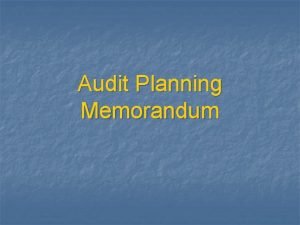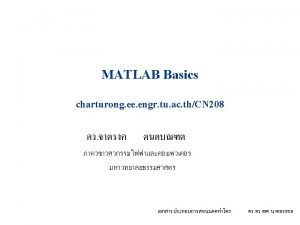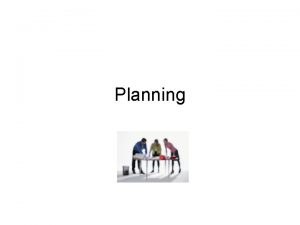Lesson planning 200612016 Format Of a Lesson Plan















- Slides: 15

Lesson planning 영어 교수법 학과 200612016 김현주


Format Of a Lesson Plan 1. Goal

Format of lesson plan • Objectives – It’s very important to state explicitly what you want srudents to gain from the lesson • Be sure that you indeed know what it s you want to accomplish • Preserve the unity of your lesson • Perdetermine whether or not ou are trying to accomplish too much, and • Evaluate srudents’ success at the end of th lesson

• Terminal Objective – Final learning outcomes thet you will be resonsible for assessing • Enabling Objective – Interim steps wihtin a lesson that build upon each other and ultimately lead to a terminal objective

• Materials and equipment • Procedures

• Assessment – Informal assessment can take place in the course of “regular” classroom cativity

• Extra class work – Homework – Extensions of classroom activity that will help students do some learning beyond the class hour

Guidelines For lesson planning 1. How to begin planning – Again considering the curriculum and the student’s needs, draft out perhaps one to three explicitly stated terminal objectives for the lesson – For each exercise in the textbook, decide of you will use I as is adapt it, or skip it entirely

Guidelines For lesson planning – Carefully plan step-by-step procedures for carrying out all techniques, especially those that involve changes and additions

Guidelines For lesson planning 2. Variety, Sequencing, Pacing, and Timing • Variety – Most successful lessons give students a number of different actibities during the class hours • Sequencing • Pacing and Timing

Guidelines For lesson planning 3. Gausing difficulty – Figuring out in advance how easy or difficult certin techniques will be is usually learned by experience – Make sure your directions crystal clear – Sutudents’ability, the linguistic difficulty should be optimal

Guidelines For lesson planning 4. Individual diffenerce – lesson plan will aim at the majorith of student in class who compose the “average” ability rnage • Design techmiquess thet have easy and difficult aspects or items • Try tod design techniques that will involve all students actively • Use judicious selection to assign members • Use small-group and pari work time

Guidelines For lesson planning 5. Student talk and Teacher talk – Balance between student talk and teacher talk

Guidelines For lesson planning 6. Adapting to an established curriculum – Primary task is not to write a new curriculum ro to ecise an existiing one, but to follow an established curriculum and adapt to it in terms of your particular group of stuedents their needs and their goals as well as your own philosophy of teaching
 Lesson plan format for micro teaching
Lesson plan format for micro teaching Ppp lesson plan example
Ppp lesson plan example Lesson plan for a gift of chappals
Lesson plan for a gift of chappals Jenis karangan tidak berformat
Jenis karangan tidak berformat Dpp in project planning
Dpp in project planning Memorandum audit
Memorandum audit Strategic planning vs tactical planning
Strategic planning vs tactical planning Planning balance sheet in urban planning
Planning balance sheet in urban planning Scenario planning workforce planning
Scenario planning workforce planning Inactivism planning
Inactivism planning Perencanaan kapasitas dan agregat
Perencanaan kapasitas dan agregat Long term plan and short term plan
Long term plan and short term plan Types of language planning slideshare
Types of language planning slideshare List the strategic objectives of aggregate planning
List the strategic objectives of aggregate planning Aggregate planning is capacity planning for
Aggregate planning is capacity planning for Micro plan format
Micro plan format





























